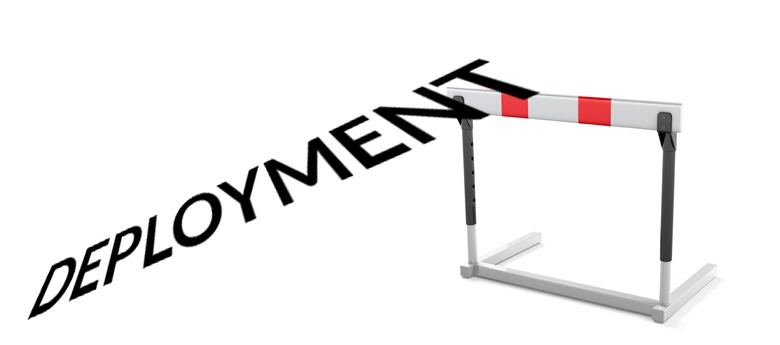6
Aug2013
Lessons Learned at the Tip of the Spear – Part 2
Terry’s Oracle P6 v8.x EPPM Deployment Hurdles
Terry’s Oracle P6 v8.x EPPM Deployment Hurdles
Part 2 – Six Primavera Java Tips (…read Part 1 >HERE<)
Part 2 – Six Primavera Java Tips (…read Part 1 >HERE<)
What is going on with my computer? It seems that every time I visit our Primavera website or launch my Primavera client software, I get errors.
With 90% certainty, I can say your trouble is rooted in your Java setup. Additionally, you probably have software issues elsewhere on your PC which are rooted in this same problem…until now, you just haven’t been motivated enough to ask questions or to try to fix them yet.
What is “Java”?
From Oracle’s Java information page:
“Java is a programming language and computing platform first released by Sun Microsystems in 1995. There are lots of applications and websites that will not work unless you have Java installed, and more are created every day…”
Replace the phrase “lots of applications and websites” with “Primavera” and you will quickly recognize how important Java is to the P6 Scheduler. You simply can’t use Primavera software without Java.
How do I get Java for my Primavera Software?
The good news: Java is free, freely accessible on the web, and can be downloaded in a couple mouse clicks.
Essentially, you point your browser at http://www.java.com/ and click the giant “Free Java Download” button.
If you don’t have Java at the time you install your P6 system software, Oracle takes the liberty of installing Java for you. Is that a good deal, or what?!
What problems can happen if my Primavera Java is wrong?
Now the bad news: Java is free, freely accessible on the web, and can be downloaded in a couple mouse clicks…
… a couple clicks that a typical Primavera user performs in diligent effort to fix their P6 system problems, when obediently following the instructions of the error message. Are you starting to get the picture?
Here’s the problem: Unlike most other software, Java does not replace itself with an updated or revised version. It simply adds another installation to your existing version, and expects your very powerful computer to figure out what to do with all the details. If, (following the directions given by the now spiraling-out-of-control error messages prompting you to do so), you keep going to the aforesaid website to download the “latest version”, you will simply compound the problem.
Amazingly, your first indication that you have problems developing with your Java installation may be a loud noise emanating from your computer. The noise you hear is your computers cooling fan going into high speed, literally because the CPU is working so hard to get the Java mess sorted out!
Oh, and your Primavera software will continue to give you trouble and errors, looping you back to www.java.com for yet more “free software”.
Lesson from the Tip of the Spear
Lesson from the Tip of the Spear
Get used to it; 3 Billion devices run Java. Your Primavera installation runs Java. Like it or hate it, we need Java as much as we need the operating system. We are all well served to sharpen our technical skills on this foundational piece of software.
Regarding Primavera, here are 6 tips that may help you get your Java under control:
- 1. If terms like “Plugin”, “JDK”, “JRE”, or “Applet” confuse you, DO NOT ATTEMPT TO FIX YOUR JAVA. Instead, contact CBA for help. When Primavera gives you Java trouble, getting the right eyes on the problem saves time, money and frustration. We specialize in getting your Primavera problems fixed right, in short order. Critical Business Analysis, Inc
- 2. Despite what Oracle recommends, Turn off the Automatic Update feature in Java. The method for turning off automatic Java updates varies with the version and your operating system. Go to www.java.com for detailed instruction.
- 3. Uninstall all but one Java update. It is particularly important that you go to www.java.com for details on how to get older versions uninstalled. Make sure the one you have is compatible with your Primavera software. (Older P6 versions likely require use of specific update packages).
- 4. Try a different browser. Firefox has consistently been my “Go-To” browser to diagnose problems with Primavera and Java.
- 5. Look for the symptoms of other Java issues. Web page applets and plugin’s that don’t work, desktop executable programs or batch files that appear briefly then go away without doing anything, software that does not display correct and full interface views, and many other abnormalities are symptoms that your Java may not be installed properly.
- 6. Learn how to set “Environment Variables” for Java. I realize this tip will seem very “geeky” to most schedulers – it’s a stretch and you may not “get” why I added it. Simply stated, Environment Variables are a gold mine of great new skills. Once you learn a few things about them, and know which ones you have, you will be able to beat almost anything Java throws at you.
21
Jun2013
Right-Size Your Implementation
For more than a couple of decades, CBA has been involved with client implementations of Primavera applications. One would think after so much interaction with many different organizations that we have seen it all. Well, we have seen a lot, but certainly not all! We have worked with very large companies that had only a few users in one department and have worked with one person consultants who build schedules for very complex large projects for many different clients. We have worked for small, medium and large firms that want to track every project regardless of size – and other organizations that only want to track projects of a certain size or larger. Some are focused on documents and contracts, others on schedule, cost and resource tracking, still others on portfolio selection – and various combinations of those.
What I find interesting is some clients seem to know exactly what they want to do, and more importantly, why they want to do it. They have a compelling story of what their current problems and pains are, and the circumstances that led them to realize the need for a portfolio project management or document management solution. Other clients are complying with the request of an important client or meeting a contractual obligation. No matter what the reason, CBA is interested in helping organizations achieve their project selection and execution goals.
Implementations can take on various shapes and sizes. Some are simple and quick; install, train, advise and go. Others are much more involved with process and procedure development, custom user guides, dozens of template projects, and integration to more than one corporate application for cost, maintenance management or HR, and on-going mentoring. Some focus on complex independent projects for individual end customers, others focus on cash flow of an entire capital portfolio and still others are document and work-flow dependent engagements.
Our job is to “right size” your implementation to meet the current needs of your organization now and allow for meeting future goals. In order to right size your implementation it is important for us to understand what your company wants to accomplish and why. We also need to understand the capabilities and project controls maturity of the team you are deploying the solution to. This helps us understand the urgency and priorities, which in turn allows us to help focus the team on “why we came to drain the swamp”. Knowing the underlying reasons of why a team wants to do something is sometimes more important than knowing the industry or the details of how projects are accomplished in a specific organization.
We believe the success of an implementation is defined as putting a solution in place that accomplishes the objectives as identified by the organization within the desired (realistic) time frame and is adopted by the user community. Additionally the solution should remain in place and mature over time. We have accomplished this result most often when all of the following occurred:
- We were able to match the complexity of the solution with the skill sets of the team tasked with putting it in place
- There was a client organization responsible for the design and on-going execution of the solution
- Users were mentored until they have a firm grasp on the process
- Management of the client organization utilized the information gained from the team in a manner that showed they used it to make business decisions
Sometimes, this means phasing in deployment of all desired requirements over a period of time, initially incorporating the most critical subset of them based on what we mutually agree can be accomplished and carried out by the user community. For example, an organization may ultimately want to have fully resource and cost loaded schedules with Earned Value metric reporting on all projects over $5MM. What may be realistic is to begin with an approach of getting all of the projects identified within the database using a simplified template approach based on type of project, incorporating common milestones and establishing relationships between interdependent projects. Once the staff is used to creating, baselining and updating the schedules, they will naturally suggest modifications to the templates making them more accurate and granular. At this point, the concept of applying budgets, actuals and remaining forecasts into the process is ready to be introduced and upon familiarization with that process – the concept of EVMS reporting can be applied.
CBA wants your projects to win and your goals to be achieved. When you engage us, let’s be sure to discuss right-sizing your implementation to ensure its success for the long haul.
read more16
May2013
Primavera P6 Configuration – Great Idea!
Let’s assume you have made an enterprise decision to manage all of your projects using Oracle’s Primavera software. Smart move! Let’s also assume that you have spent considerable amounts of dollars purchasing the product along with Oracle Maintenance. You have decided to have CBA, Inc. install your product and are ready to send your users to our terrific training classes.
Everything is installed, users are trained and it’s time to get to work – but wait…the system isn’t configured yet…the users cannot manage their projects yet…what to do?
Consider software configuration a time saver that each new customer to the Primavera software product line should seek out. Having a professional qualified provider, like CBA, work with you and your users to identify, develop and implement best practices for your unique business and configure the system according to your specific requirements will allow your team to not miss a beat when they return from training. Being proactive and pre-determining configuration services will allow your newly trained staff to know exactly were to find those very powerful tools they just learned about and know exactly were to begin.
As a part of your overall project plan, CBA’s Primavera Implementation services are extremely beneficial, cost-effective and an efficient solution to the learning curve blues.
Sure, you could try to configure the system yourself; but you’ll most likely end up wasting valuable time and spending more money trying to figure everything out by a process of trial and error than if you just paid to have the system configured ahead of time.
CBA, Inc., will make certain that your investment works from day one!
Call me: Donna McLean, Account Executive CBA, Inc. 567-202-9289
read more



